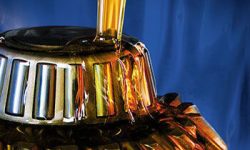Oil Analysis Testing: On-site vs. Off-site
The first and often the obvious option is to have an on-site oil analysis lab to process all oil samples collected. There are many pros to this option. Turnaround time for results can be controlled in house. There is no dependence on an outside resource. Testing packages can be altered easily, etc. However there are also cons to this option. Expensive equipment must be purchased and maintained. Testing supplies must be inventoried and purchased on a routine basis. Lab technicians must be trained for each test procedure. At least one lab analyst must be trained to interpret test results. This alone requires a technical skill that often takes years to acquire and refine.
Another option for testing samples would be to bargain with the lube vendor supplying the plant. Who knows better what is in the oil and what it should look like – especially if there are any formulation changes? Often lube suppliers will offer to perform oil analysis for “free” if the company will purchase all their lubes from said company. It has been said that letting the vendor make all the decisions around oil analysis is like “Letting the fox guard the henhouse”. One must consider if it is better to pay extra for an oil analysis program or to turn the program over to a vendor and then have limited control on most decisions. Remember, lube manufacturers are in business to sell lubes, not oil analysis. Also remember that the supplier has little to gain by offering poor results. If they tell you it’s good and your machine fails, it will be on their head. If we tell you the oil is bad so you’ll change it and you find out otherwise, you will completely lose trust in them.
The third option might be to contract with an outside lab to test collected oil samples. The pros and cons of this option, in many cases, are almost opposite of those listed in option one. Also, one must realize that there are many oil analysis labs in business, and almost everyone has their own idea of how oil analysis testing should be performed. Sure, there are standard ASTM tests that all labs follow. How those tests are used in unison can make a drastic difference in the success of an oil analysis program. For instance, not all equipment needs a particle count. Each sample does not need to have a ferrographic slide made. Each test performed on an oil sample costs money. This is another reason to make sure that you choose the correct oil analysis provider.





